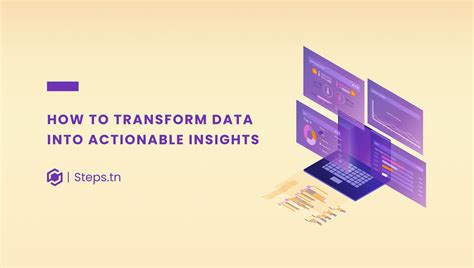Introduction

In today’s data-driven world, organizations are inundated with information. However, many struggle to extract meaningful insights from this deluge, leaving valuable opportunities untapped. But what if you knew you had the power to turn this raw data into actionable strategies that drive success? I know you see it. It’s the potential to unlock transformative change within your organization.
The Power of Data-Driven Insights
According to McKinsey Global Institute, companies that embrace data-driven decision-making experience revenue growth 5% to 10% higher than their peers. By leveraging data, organizations can:
- Identify market trends and opportunities
- Optimize operational efficiency
- Personalize customer experiences
- Reduce risk and mitigate threats
Pain Points in Data Utilization
Despite the immense potential, organizations often face challenges in unlocking the power of data:
- Data silos and fragmented systems
- Lack of data literacy and analytical skills
- Limited access to real-time data
- Difficulty interpreting and communicating findings
Motivations for Data Transformation
The need for data transformation is driven by the following motivations:
- Enhance decision-making: Data-driven insights empower leaders to make informed choices based on evidence.
- Improve customer satisfaction: Understanding customer preferences and behaviors through data analysis enables organizations to tailor products and services.
- Increase efficiency: Data-driven process optimization streamlines operations, reduces costs, and improves productivity.
- Gain competitive advantage: Accessing and leveraging data effectively can provide organizations with a significant edge over competitors.
Effective Strategies for Data Transformation
To successfully transform data into actionable insights, organizations should adopt the following strategies:
- Data Integration: Integrate data from various sources to create a comprehensive and holistic view of operations.
- Data Governance: Establish clear data ownership, quality standards, and access controls.
- Investment in Analytics Tools: Leverage advanced analytics platforms and machine learning algorithms to analyze and interpret data effectively.
- Data Literacy Training: Train employees at all levels to understand and utilize data for decision-making.
- Collaboration and Communication: Foster cross-functional collaboration and ensure insights are clearly communicated to decision-makers.
Tips and Tricks for Data-Driven Success
- Identify Business Objectives: Define clear goals and objectives for data analysis before embarking on projects.
- Focus on High-Impact Data: Prioritize the analysis of data that has the greatest potential for improving decision-making.
- Use Data Visualization: Make data accessible and understandable through interactive dashboards and visualizations.
- Develop a Data-Driven Culture: Encourage a mindset where data is valued and used to inform every aspect of operations.
- Leverage Data Creatively for New Applications: Explore innovative ways to utilize data, such as predictive analytics, process automation, and customer segmentation.
Use Cases and Applications
Data-driven insights have a wide range of applications across industries:
- Retail: Optimize inventory management, analyze customer behavior, and personalize marketing campaigns.
- Healthcare: Improve patient outcomes, reduce costs, and develop tailored treatments.
- Financial Services: Assess risk, detect fraud, and optimize investment portfolios.
- Manufacturing: Streamline production processes, enhance quality control, and predict demand.
- Customer Service: Resolve issues faster, personalize interactions, and improve customer satisfaction.
Tables for Data-Driven Success
Table 1: Benefits of Data-Driven Decision-Making
| Benefit | Impact |
|---|---|
| Revenue growth | 5%-10% increase |
| Operational efficiency | Cost reduction, productivity improvement |
| Customer satisfaction | Enhanced loyalty, increased revenue |
| Risk mitigation | Reduced financial losses, improved compliance |
Table 2: Challenges in Data Utilization
| Challenge | Impact |
|---|---|
| Data silos | Fragmented data, limited access |
| Lack of data literacy | Misinterpretation of results, poor decision-making |
| Limited real-time data | Inability to respond quickly to changes |
| Difficulty interpreting findings | Misalignment between insights and business needs |
Table 3: Effective Data Transformation Strategies
| Strategy | Impact |
|---|---|
| Data integration | Comprehensive data view, improved decision-making |
| Data governance | Data quality, security, and accessibility |
| Analytics tools | Advanced data analysis, predictive capabilities |
| Data literacy training | Data-informed decisions, improved employee engagement |
| Cross-functional collaboration | Shared insights, aligned decision-making |
Table 4: Data-Driven Applications Across Industries
| Industry | Application | Impact |
|---|---|---|
| Retail | Customer behavior analysis, inventory management | Increased revenue, improved customer experience |
| Healthcare | Patient outcome prediction, disease diagnosis | Improved patient care, reduced costs |
| Financial services | Risk assessment, fraud detection | Enhanced financial stability, increased profitability |
| Manufacturing | Process optimization, quality control | Increased productivity, reduced defects |
| Customer service | Issue resolution, personalized support | Improved customer satisfaction, reduced churn |
